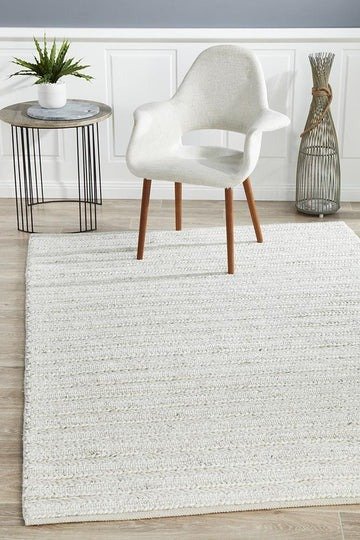June 11, 2025
Estimated Reading Time
8 Minutes & 40 Seconds
Design the Perfect Space with Smart Garden Center Layout and Indoor Botanical Garden Planning
Creating an appealing and functional garden center layout design and an inspiring indoor botanical garden design requires a delicate balance of artistry, horticultural expertise, and spatial planning. Whether you’re building a commercial garden center or designing a serene indoor haven filled with lush greenery, thoughtful layout decisions play a crucial role in aesthetics, customer experience, and plant health. In this article, we’ll explore key principles, creative ideas, and practical tips for optimizing both outdoor garden centers and indoor botanical spaces.
Why Garden Center Layout Design Matters
A well-designed garden center layout encourages visitors to explore, engage, and purchase. It’s more than just putting plants on shelves—it’s about crafting an immersive experience that tells a story with color, texture, and scent. From the placement of seasonal blooms to the logical flow of customer foot traffic, every detail should be intentional.
Key Elements of Garden Center Layout Design:
- Zoning for Purpose and Flow
Divide your garden center into clear zones: annuals, perennials, indoor plants, garden tools, soil amendments, and décor. Position high-demand items toward the back to draw customers through other zones, increasing the chance of impulse buys. - Entrance Appeal
First impressions matter. Your entrance should be colorful, vibrant, and seasonally themed. Use signage and displays that pull customers in and offer a glimpse of what lies ahead. - Customer Pathways
Pathways should be wide enough for carts and accessible to all. A circular or serpentine flow encourages movement throughout the space, allowing customers to encounter every section of the garden center naturally. - Product Visibility and Grouping
Group plants with complementary growth needs or visual aesthetics together. For example, place shade-loving ferns and caladiums under an arbor to demonstrate shade gardening ideas. - Educational Signage and Inspiration Corners
Provide clear, helpful signage that educates customers about plant care, companion planting, or design themes. Inspiration corners—like “Pollinator Gardens” or “Succulent Heaven”—can also boost engagement and sales.
Best Practices for Indoor Botanical Garden Design
Unlike outdoor garden centers, indoor botanical garden design focuses more on creating a tranquil environment that promotes relaxation, education, and conservation. These indoor spaces often serve as tourist attractions, wellness sanctuaries, or part of a commercial complex.
Principles of Indoor Botanical Garden Design:
- Climate Control and Lighting
Indoor gardens rely on artificial climate control to simulate natural conditions. Design zones based on the microclimates—tropical, arid, temperate—each with appropriate humidity and lighting setups. LED grow lights and skylights enhance both plant growth and ambiance. - Structural Layout and Accessibility
Use curving pathways and multilevel displays to add depth and interest. Make sure walkways are ADA-compliant and incorporate seating areas for visitors to relax and enjoy the environment. - Thematic Zones and Visual Journeys
Organize the garden into themes: rainforest, desert, vertical gardens, bonsai corners, or herb sections. These themes create a sense of exploration and wonder, enhancing the visitor experience. - Water Features and Sculptural Elements
Add water elements like small fountains or koi ponds to enhance sensory appeal and regulate humidity. Sculptures, art installations, or even small reading nooks can enrich the indoor garden’s atmosphere. - Sustainable Design
Use recycled materials, rainwater harvesting, and energy-efficient lighting. Sustainability is a growing focus in indoor botanical gardens, both for environmental impact and educational purposes.
Merging Commercial Strategy with Aesthetic Vision
Whether you’re creating a garden center layout design for retail or planning a soothing indoor botanical garden design, the goal is to seamlessly merge commercial objectives with visual and ecological harmony. In a retail environment, your design should guide customer behavior and highlight your best-selling products. Indoors, the emphasis might shift more toward tranquility and education, but layout still plays a vital role in how people interact with the space.
Tips to Enhance Visitor Experience:
- Add Interactive Elements: Small kiosks with plant trivia, QR codes for care guides, or workshops can turn a simple visit into a memorable experience.
- Focus on Natural Light: In both indoor and outdoor settings, maximize natural light where possible. It enhances plant health and customer well-being.
- Consider Scent and Texture: Use fragrant flowers and textured leaves near pathways. These subtle sensory details elevate the design experience.
The Role of Technology in Modern Garden Design
Technology now plays an integral role in both garden center layout design and indoor botanical garden design. From digital mapping tools that help you visualize layouts before installation to smart irrigation and environmental sensors, modern tech streamlines maintenance and improves outcomes.
Examples of Useful Tech:
- 3D design software for layout visualization
- Environmental control systems for temperature, humidity, and lighting
- Interactive mobile apps for self-guided garden tours
Conclusion: Design Spaces That Grow on People
Effective garden center layout design and captivating indoor botanical garden design go beyond simply arranging plants. They invite exploration, inspire learning, and foster emotional connections between people and nature. By thoughtfully planning every element—from pathways to product placement to sensory experiences—you create a space that blooms with possibility.
Whether you aim to increase retail revenue or provide a peaceful sanctuary, the secret lies in designing with purpose, passion, and plants in mind.
YOU MAY ALSO LIKE
Air travel is one of the safest modes of transportation,...
Alexander Lee
August 25, 2025
In today’s fast-growing fashion industry, the demand for branded kurtis...
Oscar Anderson
August 22, 2025
Every home deserves comfort, warmth, and personality, and one of...
Grace Taylor
August 20, 2025


